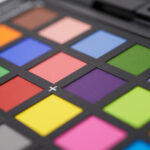Interactive Smart Boards for Classroom Success
Interactive Smart Boards have revolutionized modern classrooms, changing how teachers engage learners and instruct. These cutting-edge tools blend the most recent in educational technology, offering an engaging space that grabs attention and fosters collaboration. As more schools adopt modern learning solutions, the perks of these interactive panels become evident—enhancing learner engagement and fostering a dynamic learning atmosphere that caters to various learning styles. This summary paves the way for a closer look into the many advantages, advancements, and potential developments of these digital tools in education.
Understanding Smart Boards: A Powerful Educational Tool
Interactive touchscreens, known as smartboard, are changing the way we teach and learn. These touch-sensitive panels enable educators and students to interact with digital content using fingers or styluses. This hands-on interaction turns education into more interactive than traditional methods.
Interactive whiteboards provide more than just presentations. They allow users to modify, annotate, and retrieve web-based materials easily, promoting collaboration. This engagement boosts student involvement and enhances understanding and retention. As advancements continue, smart boards are becoming crucial for both teachers and students.
Teachers appreciate these tools for their capacity to create lessons more engaging. These tools help learners understand challenging concepts and participate in class conversations. The shift from passive to active learning represents a significant leap forward in education, making the learning process more fulfilling.
Advantages of Interactive Learning Tools
Interactive boards have a revolutionary effect on teaching and learning. These engaging panels captivate learners across various types of learning, from visual to kinesthetic. By integrating technology into education, they guarantee every learner can fully engage.
Live teamwork between learners is a key benefit. Collaborative tasks and discussions become lively, with learners sharing ideas directly on the panel. This creates a strong sense of cohesion and teamwork. Instructors also receive instant entry to wide-ranging online resources, improving lesson planning and classroom management.
The tools make it easy to incorporate engaging aspects to lessons, guaranteeing they are accessible to all. This method enables teachers to craft lessons that are both educational and captivating. Learners become more engaged and motivated when using interactive displays, leading to more successful educational achievements.
| Feature | Benefits |
|---|---|
| Active Learning | Promotes learner engagement and involvement |
| Teamwork | Facilitates cooperation and collaborative tasks |
| Access to Resources | Instant availability of a wide array of digital content |
| Technology Incorporation | Improves lesson planning and engagement |
Adopting smart boards in the classroom marks a pivotal move towards contemporary learning. It significantly enhances the classroom experience for both teachers and students.
Interactive Panels for Learning: Boosting Participation
Digital interactive displays reshape the learning space, making it more engaging for students. These tools encourage engagement and collaboration, offering a space for deep immersion in learning material. The progress of classroom technology has been characterized by the integration of smart boards, greatly enhancing the technology-driven education process.
Encouraging Hands-On Involvement Among Students
Instructors can now motivate learners to directly interact with educational content using interactive displays. This hands-on approach boosts participation as learners control the material on the display. The act of writing on the screen gives students a sense of control over their education. This engagement strengthens their commitment in discussions, thus improving their understanding of the topic.
Catering to Varied Educational Preferences
Smart boards are essential for today’s classrooms, accommodating various learning styles. Visual learners benefit from the high-definition displays, while auditory learners gain from audio-visual content. Hands-on students engage directly on the interactive display. This versatility ensures an inclusive learning environment, designed for each learner’s unique style.
| Educational Preference | Interactive Panel Functions | Advantages |
|---|---|---|
| Image-Based | High-definition displays | Enhanced comprehension through visuals |
| Auditory | Multimedia content | Greater knowledge retention with multimedia support |
| Kinesthetic | Interactive touch capabilities | Encourages active learning and exploration |
Recent Advancements in Smart Board Technology
The world of interactive whiteboards is experiencing rapid advancements, bringing forth features that significantly improve learning experiences. These modern smart boards focus on safety and comfort, meeting the diverse needs of today’s educational settings.
Antimicrobial Features for Cleanliness
Antimicrobial coatings are now a standard feature, preventing bacteria and pathogens from growing on interactive panels. This innovation is essential in challenging times, ensuring a safer learning environment for students. Schools find the cost of these tools justified, especially when considering its role in protecting the well-being of learners and teachers.
Eye Protection for Users
Vision fatigue is a significant issue for teachers and learners. EyeSafe low blue light technology in modern smart boards mitigates visual discomfort, guaranteeing ease of viewing during extended lessons. This addition emphasizes a dedication to learner well-being, making smart board technology a compelling choice for schools.
Real-Time Cloud Whiteboarding
Real-time cloud whiteboarding have transformed collaboration in the learning environment. It allows teachers to seamlessly engage with both on-site and virtual learners, fostering a more integrated and dynamic learning environment. The adoption of cloud-based features into classroom activities can substantially improve learning outcomes, highlighting the importance of smart board for classroom in any classroom.
Incorporating Interactive Displays in Lesson Plans
Integrating the interactive display into lesson plans can greatly enhance educational practices. Educators can use these devices for various activities, designing a more engaging classroom experience. By including technology-driven learning, teachers can design engaging lessons that engage students deeply.
Effective strategies for integration include:
- Employing the interactive display for interactive discussions, allowing students to engage directly with content.
- Using multimedia presentations that combine videos, visuals, and animations to develop a multisensory lesson.
- Adopting station rotations where groups of students can manipulate the smart board for group activities.
- Introducing game-based learning activities that can be supported through the interactive display, making lessons more enjoyable.
| Task Category | Benefits | Suitable Subjects |
|---|---|---|
| Interactive Discussions | Boosts participation and promotes critical thinking | Language Arts, History |
| Multimedia Presentations | Engaging media enhance memory | Biology, World Studies |
| Station Rotations | Promotes collaboration and shared learning | Math, Art |
| Game-Based Learning | Turns lessons into interactive games and inspires participation | Various Subjects |
Incorporating these methods within educational technology supports teachers in meeting learning objectives and increasing student involvement. The smart board interactive whiteboard streamlines educational processes and fosters a cooperative classroom atmosphere.
Interactive Displays and Distance Education
In the current world of education, smart boards are essential for successful remote education. These tools boost the educational journey for students at home. They enable teachers to use hybrid learning tools for real-time collaboration and interactive lessons.
Smart boards can share screens during video calls, enabling teachers to deliver instruction to learners regardless of location. The ability to record lessons supports learning further by letting students go over content at their convenience.
Live engagement is a key benefit of smart boards in remote education. Through live tasks, instant feedback tools, and quizzes, learners can participate in class sessions. This keeps the connection between teachers and learners, making remote learning more interactive and engaging.
| Functionality | Advantages for Distance Education |
|---|---|
| Virtual Classroom Integration | Enables educators to teach directly to students at home, making sure everyone is receiving the same content. |
| Session Capture | Allows learners to go over lessons at their own pace, improving retention and understanding. |
| Real-Time Interaction | Encourages student participation through polls and quizzes, fostering engagement and response gathering. |
| Collaborative Learning Platforms | Supports teamwork and discussions, letting learners to collaborate seamlessly from various locations. |
Smart boards are crucial for enhancing remote education. They support a more interactive and inclusive learning environment for all learners, whether in class or at home.
Price Considerations for Interactive Displays: Is It Worth the Investment?
The choice to adopt interactive displays for classrooms often depends on budgetary considerations. It’s essential for institutions to evaluate the smart board cost before deciding. The initial smart board price can be substantial, starting at $1,500 to over $5,000, depending on specifications and dimensions. However, the long-term benefits often make the initial cost worthwhile.
Interactive displays enhance student engagement by supporting hands-on education. This allows students to actively participate in lessons. Studies show that learning environments with smart boards see a rise in student collaboration. This leads to better academic results, making the investment tech-enhanced learning tools worthwhile.
The benefits of smart boards go beyond just engaging students. They streamline lesson administration, cutting the hours teachers spend on administrative tasks. This allows for deeper lesson explorations and exploration of subjects, making the most of class time. Schools often find that the positive impact on classroom dynamics makes worthwhile the investment of interactive displays.
| Aspect | Traditional Classroom Tools | Interactive Display Advantages |
|---|---|---|
| Initial Cost | Ranges ($300 – $1,500) | Higher ($1,500 – $5,000) |
| Engagement Improvement | Limited | Significant |
| Collaboration | Minimal | Enhanced |
| Lesson Planning Ease | Average | Substantial |
| Long-term Value | Depends | Consistent Gains |
In conclusion, while the upfront investment in a smart board is significant, educational institutions must evaluate the long-term benefits. Smart boards provide improved engagement, enhanced collaboration, and simplified classroom dynamics. These advantages make smart boards a essential tool to today’s educational settings.
Selecting the Ideal Interactive Display for Your Classroom
Choosing the ideal smart board for your classroom requires a thorough evaluation of several aspects. Teachers must consider display dimensions, smart board price, and compatibility with current classroom technology. With various models on the market, understanding key specifications is crucial for making an informed decision.
Evaluating various options from leading brands like BenQ and Promethean can streamline the decision-making process. Each manufacturer presents unique interactive displays designed for specific educational requirements. Below is a comparative overview of some popular models:
| Brand | Model | Screen Size | Touch Capabilities | Supported Platforms |
|---|---|---|---|---|
| BenQ | RP Series | 65″/75″/86″ | Multi-touch, Gesture Recognition | Windows, Android, iOS |
| Promethean | ActivPanel | 65″/70″/75″ | Active Touch, Whiteboarding Tools | Windows, Google Workspace, Mac |
When choosing a smart board, take into account your specific teaching environment. Assess the curriculum content and the level of interaction desired. Key attributes like touchscreen sensitivity, app compatibility, and usability greatly influence instructional quality and learner involvement. By considering these points, teachers can choose the most suitable smart board, thereby enhancing the learning experience.
Upcoming Trends in Interactive Displays in Education
The next era of educational tools is set to be transformed by the advancements in interactive displays. Developments like AI integration are on the horizon, promising to reshape tailored education. By utilizing AI, smart boards can tailor resources and give responses according to the specific needs of each learner. This approach encourages self-paced education, making education more effective.
AR tools are also poised to transform how classroom materials is presented. These technologies will enable educators to design immersive experiences that engage students on a profound level. These innovative tools not only enhance engagement, but also foster collaboration. This leads to increased student participation and interest in the content.
Furthermore, improved teamwork features are paving the way for a more collaborative classroom. Functions that support group work and real-time feedback are making smart boards essential components for successful instruction and education. As technological progress move forward, smart boards will likely play a pivotal role in changing conventional learning spaces into dynamic, adaptive environments. These spaces will be tailored to adapt to future generations, ensuring a more effective learning experience.
As interactive technologies evolve, interactive displays are not only adapting to classroom needs, but paving the way for next-gen classrooms. Their capacity to work alongside cutting-edge technologies like AI, augmented reality, and real-time online engagement will solidify their place as essential learning instruments. Ultimately, the rise of interactive displays will reshape the classroom, enabling both teachers and learners to excel in a more dynamic, engaging, and collaborative educational future.



